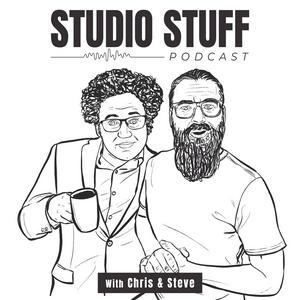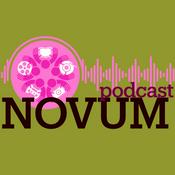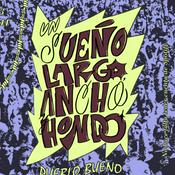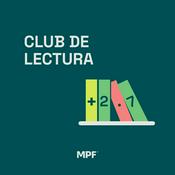Episodios disponibles
5 de 29
- Ep 27 - The 1 Reverb Rule That Changes the Whole MixWhat happens when 17 mixers take the exact same piano-and-vocal song… and all make different reverb choices? In this episode, we break down a recent Mixdown Coaching Community mix challenge where one vocal reverb decision, or a tiny change to piano tone, completely shifted the emotion of the whole track. We talk about why elements like vocal reverb, piano EQ, kick and snare act like “tone anchors” for your mix, why great recordings almost feel like they “mix themselves,” and how your personal taste (EDM, orchestral, analog head, etc.) shows up in every decision you make. Plus, we tackle a listener question on pre vs post-fader sends and automation—and why we’re almost always in the post-fader camp.Special thanks to our sponsor, Audient. You’ll Learn: Why vocal reverb can tilt the entire emotional center of a mix How piano EQ and ambience instantly change the tone of a song What happens when 17 mixers tackle the same stems with different tastes Why great performances and recordings “mix faster” and need less fixing The difference between mixing the song vs. mixing the plugin chain How to think about pre vs post-fader sends when automating reverbs and effects Topics & Stories: The MCC mix challenge: 17 versions of the same Malina track The one “roomy vocal” mix that made the whole track feel warmer and closer Bright vs warm piano choices on Steve’s heavily-modded Yamaha C7 The EDM-style timed delay on piano that changed the groove completely The vintage, mid-focused vocal mix vs the more hi-fi, digital-leaning takes Why we’re seeing MCC members’ mixes get closer and more “mature” over time Good song + good performance + good recording = the mix almost does itself The danger of “barbecue sauce on everything” vs respecting the tracks you’re given Listener Q&A: Question: “Can you go deeper into pre vs post-fader when automating sends to reverb and delay? When does pre-fader actually make sense?” We talk about: Why we almost always use post-fader sends on lead vocals and key elements How post-fader keeps your EQ, compression, and tone decisions feeding the reverb Rare cases where pre-fader could make sense (parallel/VCA-style setups) Why it’s better to think musically than to obsess over “purist” routing choices Final Takeaway: Reverb isn’t just “space.” It’s emotion. On a vocal-driven song, your reverb choice can quietly decide whether the whole mix feels intimate, epic, cold, warm, vintage, or modern. The more you respect the song, the performance, and the stems you’re handed, the more your mixes start to sound mature—not because you used the fanciest plugin chain, but because every decision serves the story. 👉 Got a question for us?📩 Submit it here: Form LinkWe’ll answer as many as we can in upcoming shows. And if you’re digging the show, hit follow/subscribe and leave a quick review. It really helps more home studio folks find Studio Stuff.--------29:15
- Ep 26 - Mix Bus Magic: Why We Compress, Tape, Limit… and When Not ToWe get asked this a lot: “Why put stuff on the mix bus?” Today we unpack the why and the how—from gentle bus compression that makes tracks move together, to tasteful EQ and tape for mojo, to mixing into a limiter for vibe without boxing in the master. Then we tackle Demo Syndrome—when clients fall in love with the rough—and share how we reset ears, separate taste from problems, and keep momentum. Special thanks to our sponsor, Audient. You’ll Learn: Why mixing into a bus chain changes your decisions (in a good way) The compression settings we start with for real “glue” and movement When bus EQ solves tone—and when it just points you to the real problem How and where we use tape on the bus for character without mush Why a limiter can help while mixing but should be bypassed before mastering Practical steps to beat Demo Syndrome and get client buy-in Topics & Stories: “Set it early, watch the meters”: not painting yourself into a corner Dual-mono vs. linked compression and when extra movement helps The “air & earth” cheats we reach for (and when to leave it for mastering) Using AI mastering chains as ideas rather than a one-click finish Chris’s grand-dad naming crisis (“Dude” didn’t age well) Audient love: iD line + ASP preamps, and hardware-hosted room correction Listener Q&A: A simple but killer question: “Why do I need anything on my mix bus?” We break down the musical reasons (glue, tone, movement) and the workflow wins, plus how we avoid stepping on the mastering stage. Final Takeaway: Start with intention. Put your bus tools on early, mix into them lightly, and let them guide better track-level moves. And when Demo Syndrome hits, buy time, test both versions, and keep what truly serves the song. 👉 Got a question for us?📩 Submit it here: Form LinkWe’ll answer as many as we can in upcoming shows.--------36:37
- Ep 25 - Studio Slang Decoded: What “Depth,” “Glue,” and “Vibe” Actually MeanWe all say it: “It’s muddy.” “Needs glue.” “Give it more space.” But what does that actually mean in practice? In this episode, we translate the most common mixer speak into specific moves you can make today, then answer a listener question on adding space without using reverb. You’ll Learn: Where “mud” actually lives (150–200 Hz for many sources, 250–500 Hz for mix buildup) What “glue” really is (bus compression, shared ambience, subtle EQ) How to create space without reverb: panning, subtractive EQ, smart delays The difference between stems and multitracks (and when to send which) Why “musical EQ” and “vibe & character” are real, even if you can’t meter them Topics & Stories: Muddy vs boomy vs woolly (and why tiny cuts move mountains) The smiley-face EQ era: why it sounded great… until it didn’t Depth, width, and density: front/back/left/right as arrangement tools “Crush the drums”: parallel, ceiling/floor, and when distortion equals energy Filtering the send into a delay for cleaner “felt, not heard” space Stems vs multitracks: live tracks, post, and keeping the “makeup” on The “depth” pronunciation debate, dad jokes, and a drum “skin head” moment 🤦♂️ Huge thanks to Audient Audio for supporting the show 👉 https://audient.com Listener Q&A: How do I add space without reverb? Our go-tos: Panning first, then subtractive EQ (150–200 Hz and 2–8 kHz real estate) Slapback or short stereo delays you feel more than hear High-pass/low-pass the send feeding the delay for natural results Final Takeaway: Great mixes aren’t just louder or brighter, they’re organized. Give each element its own frequency lane and its own spot in the panorama, then use tiny bus moves to make the whole song breathe together. 👉 Got a question for us?📩 Submit it here: Form LinkWe’ll answer as many as we can in upcoming shows.--------32:09
- Ep 24 - Stop Inconsistent Mixes – Make Your Album FlowEver finish an album and realize every song sounds… just a little different? Yeah... we’ve all been there. In this episode, we dig into how to keep a full record sounding cohesive without killing the vibe or getting lost in “template land.” We share our real-world album mixing workflow: how we craft a strong “first-song” mix, build a flexible mix template, what actually carries over between songs (and what definitely doesn’t), and how to reference yourself as you go so your record feels like one connected piece of art. Then we switch gears into room correction, do you really need it if you’ve already “learned” your room? We talk about what works, what doesn’t, and why acoustic treatment still beats software (but both can play nice together). Huge thanks to Audient Audio for supporting the show 👉 https://audient.com You’ll Learn: Why the first song sets the tone for the entire album How to mix faster using a smart, flexible album template What to copy between songs (drums, bass, lead vox) and what to rebuild How to prevent “album drift” and keep your sound consistent The truth about room correction vs. room treatment How calibration tools can actually help dense rock or punk mixes Topics & Stories: The joy of “Select All → Delete” to build a new mix template Why we still reference earlier songs while mixing Ballads vs. rockers: when reverb and ambience should change Different studios, different drummers—how we tie it all together The Denny’s breakfast redemption arc (we went back!) Chris’s clouds are almost on the ceiling—progress! Audient iD44 goes on a Euro trip: high-quality preamps in carry-on form Listener Q&A: Shoutout to Arthur from MCC for the album consistency question, and to Tomas from Norway for asking about room correction and calibration tools. Final Takeaway: Make your first mix the North Star for your album. Use smart templates, reference often, treat your room first, and let every song serve the record. Consistency doesn’t mean boring—it means connected. 👉 Got a question for us?📩 Submit it here: Form LinkWe’ll answer as many as we can in upcoming shows.--------32:53
- Ep 23 - Mix as You Go vs Start Fresh: Where Does Mixing Really Begin?Ever record with delays, reverbs, and panning to “get the vibe,” then wonder if you should wipe the slate clean before the final mix? In this episode we unpack where the mix actually begins—during tracking or at mixdown—and how we decide what to keep, what to reset, and why. Then we answer a great listener question about routing: should your FX sends (like drum reverbs) return to the drum bus or go straight to the mix bus? Huge thanks to Audient Audio for supporting the show 👉 https://audient.com You’ll Learn: The benefits (and risks) of “mixing as you go” while recording When we hit RESET at mix—and the few things we keep from the rough How to build a recording template that sounds good with low latency Why cue-mix psychology matters: give performers what helps them sing/play better FX routing 101: returning sends to the instrument bus vs straight to the 2-bus A simple VCA workaround if your FX aren’t following bus automation Topics & Stories: Chris finally mounts the studio panels (they’re straight, which means… outside help 😅) Tracking with performance-defining delays (hello, The Edge) Steve’s take: compression/reverb in the cans can mess with feel (for some artists) Jazz vs pop/rock: when we skip the drum bus—and when we go tight/together Templates that won’t choke your session during tracking, but scale for mixing Sponsor shout: Audient’s ORIA Mini gets a mention Listener Q&A: Shoutout to Neil Higgins! His question: “Should my FX sends return to the instrument bus (e.g., drums) or straight to the mix bus?” Short answer: Both can work. If FX return to the drum bus, they’ll ride and pump with drum-bus processing and automation—tighter, more cohesive. If they go to the mix bus, they’ll bypass drum-bus processing—often more open and independent. Choose by ear; a VCA pair (drum bus + drum FX) can keep automation in lockstep when split. Final Takeaway: There’s no single “correct” starting line for a mix. Be intentional: track with enough vibe to inspire, then decide whether to reset or build on it. For FX routing, pick the path that best serves how your buses are processing—and how you want elements to move. 👉 Got a question for us?📩 Submit it here: Form LinkWe’ll answer as many as we can in upcoming shows.--------31:29
Más podcasts de Arte
Podcasts a la moda de Arte
Acerca de Studio Stuff
The Studio Stuff Podcast is your go-to home studio hangout, where music production, mixing, recording, and mastering meet real talk, practical advice, and the occasional lousy jokes. Hosted by Chris Selim and Steve Dierkens, this isn’t a dry, technical lecture—it’s a laid-back, no-BS conversation about making great music with the gear you actually have.
Expect real-world insights, gear, and technique debates, plugin obsessions, and plenty of laughs along the way. Plus, we love hearing from you! Send in your questions, and let’s figure this whole studio stuff thing out together.
Sitio web del podcastEscucha Studio Stuff, Bibliotequeando y muchos más podcasts de todo el mundo con la aplicación de radio.net

Descarga la app gratuita: radio.net
- Añadir radios y podcasts a favoritos
- Transmisión por Wi-Fi y Bluetooth
- Carplay & Android Auto compatible
- Muchas otras funciones de la app
Descarga la app gratuita: radio.net
- Añadir radios y podcasts a favoritos
- Transmisión por Wi-Fi y Bluetooth
- Carplay & Android Auto compatible
- Muchas otras funciones de la app


Studio Stuff
Escanea el código,
Descarga la app,
Escucha.
Descarga la app,
Escucha.




































